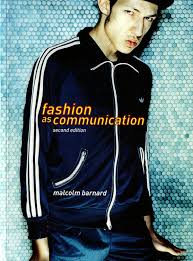
For this task I’ve chosen to reflect on the article “Fashion as Communication” by Malcolm Barnard. The article is about how the word ‘Fashion’ varies by definition, how the understanding of ‘fashion’ societies can influence the movement of fashion and how ‘fashion’ has developed or remained traditional dependent on the cultures or societies.
The article states the varied definitions for ‘fashion’. Starting with the original meaning from the Oxford English Dictionary, it says fashion is “an activity and something one did, perhaps, when fashion is now something one wears” and confirms this as a noun and a verb, fashion is both an object and an activity. It then discusses that Polhemus and Proctor believe within western societies, ‘fashion’ is used more often in the terms adornment, style and dress (Polheums and Proctor 1978:9) relating more to how clothing can look, decorate or enhance the human body. Here, I have come to the conclusion that ‘fashion’ is actually components of all these terms and definitions together; but not necessarily together as one as they can easily contradict one another. For example, the article goes on to explain in the eyes of Wittgenstein (Wittgenstein 1958: §§66-7) clothing is decorative but isn’t always fashionable and fashion is adornment but isn’t necessarily clothing or an accessory. The last point continues on this, explaining that “while all fashion is in style, not all fashion is an item of dress” and that “some fashion involves changing the colour or shape of the body”.
The article continues to discuss how fashion can be anti-fashion. For example, Simmel (1971) explains that there are two social tendencies within making fashion grow and develop. For fashion to work, people need to be both surrounded and kept individual from society. Being surrounded by society allows ideas and concepts to grow, but individualism also allows people to tailor the “fashion” to their own unique styles and interests. This is then a catalyst for fashion to grow and expand. Simple and complex societies show these exact ideas, by breaking society into groups, people in complex societies can express their individualism and develop their own identity. Whereas in simple societies, styles and identities get trapped, making it harder to develop. This results in anti-fashion. Simmel’s mentions, and I agree, “it is unlikely that anything like society could exist if oneof these forces were absent”.
Flügel then explores the idea of fixed costumes and modish costumes. In summary, Fixed costumes are associated with a particular place which allows traditional, non-fashion and cultured dress to be worn. These won’t change much over time but varies by location. In contrast, modish costumes are fashion orientated and more in the western world. The fashion trends occur all over the western world at one time but very rapidly change in time as styles are quickly replaced by another (Flügel 1930: 129-30). Polhemus and Proctor identify fixed dress with anti-fashion, much like the Queens Coronation gown and the traditional values involved. They compare modish dress with fashion such as the Dior’s Tulip dress which has developed every season since.
To conclude, the meaning of fashion to me is clear. It is very much about using fashion to show case your identity and personality. It’s important to surround yourself with innovative ideas from the “simple societies” and “modish costumes” but is also important to allow own personal identities and uniqueness to shine though mundane styles in order to develop your personal identity further.
Bibliography:
- Malcolm Barnard, Fashion as Communication
